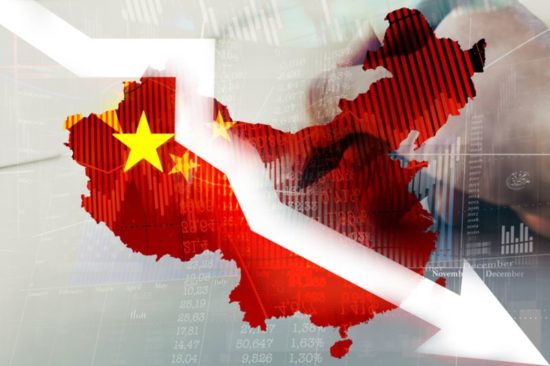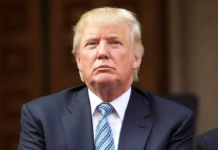Beijing’s “critical battle” against financial risk could set off the very economic crisis it hopes to avoid
Editorial from Socialist《社会主义者》magazine, Spring edition 2018
“Mounting debt, a housing crisis and an increasingly hostile United States” – these are the three big challenges facing Xi Jinping’s government in 2018 as outlined by the Alibaba-owned South China Morning Post in a recent editorial.
The extent of China’s debt problems have been commented on and debated at length in global media. Debt as a share of GDP has risen from 141 percent in 2008 to 256 percent last year. This figure rises to 304 percent of GDP if it’s based upon so-called total social financing, a measure that includes shadow banking activity. Despite much government talk about “deleveraging” (reducing debt) China’s debt continues to grow faster than GDP.
“Severely distorted”
Global capitalist institutions like the IMF and Bank for International Settlements have warned China could soon face a serious financial crisis. The IMF in December cautioned that China’s debt build-up was “consistent with a high probability of financial distress”.
But an even more important sign of the seriousness of the situation is a string of recent speeches by top CCP (so-called Communist Party) officials, displaying a change of tone. Lou Jiwei, a former finance minister, told a Beijing forum in January that the level of risk facing China’s financial system might now be higher than in the US before the global crash of 2008. Lou said China’s financial system had become “severely distorted”, and that the “likelihood of China generating systematic financial risks is pretty big”.
Similarly candid warnings have been made by Guo Shuqing, the chief banking regulator, and Zhou Xiaochuan, the central bank governor. Speaking to People’s Daily in January, Guo said the shadow banking sector – estimated to be worth 125 percent of GDP – had to be “dismantled”. Zhou, at last year’s 19th CCP Congress warned China may face a “Minsky Moment”, which in layman’s terms means the bursting of a speculative financial bubble.
The government has adopted almost militaristic language to underline its seriousness about the “critical battle” it must wage “in the next three years” against financial risk. This campaign began a year ago, but has intensified since Xi Jinping cemented his control at the 19th Congress. The message from Beijing is that this time, “it’s for real”.
Groundhog Day
But this remains to be seen. The Chinese regime’s track record over the past decade is littered with pumped-up announcements of neoliberal “reform” and monetary tightening – to make the economy “more efficient” – which then fade as it reverts to mammoth injections of credit stimulus to prevent an economic downturn.
This is partly due to the power struggle between the centre and China’s huge, economically ambitious regions. But it’s also rooted in the ruling elite’s fear of an economic slump, which could energise and bring to the surface the mass anger that is already widespread.
For this reason Beijing’s economic policies zig zag between “reform” and it’s antithesis in the form of new credit stimulus. This has been a repeating cycle, likened by one commentator to the American movie ‘Groundhog Day’.
As 2018 opens, the government’s “de-risking” campaign has put the squeeze on local governments, state-owned companies, and companies that made major overseas acquisitions financed by huge amounts of debt. Reports from around the country testify to local infrastructure projects – from subway systems to industrial parks – being cancelled as the credit tightening policies bite.
Companies like HNA, Dalian Wanda and Anbang Insurance (recently seized by the government), which spent massively on overseas deals and property, are now selling assets to meet debt repayments.
But the government is walking a tightrope. Its aim is to assert control over a dangerously uncontrolled process. But one wrong step and its policies could detonate defaults and financial collapses, beginning with smaller, more peripheral regional banks, companies and shadow finance entities, but which could snowball and set off a more systemic chain reaction.
The problem with shadow banking activity in general and especially China’s system, which has grown with astonishing speed and complexity, reproducing in huge numbers every type of exotic derivative created by Western financiers, is that nobody really knows which deals and ‘products’ are connected to which, and how they could affect the wider economy. Until they go bad, that is.
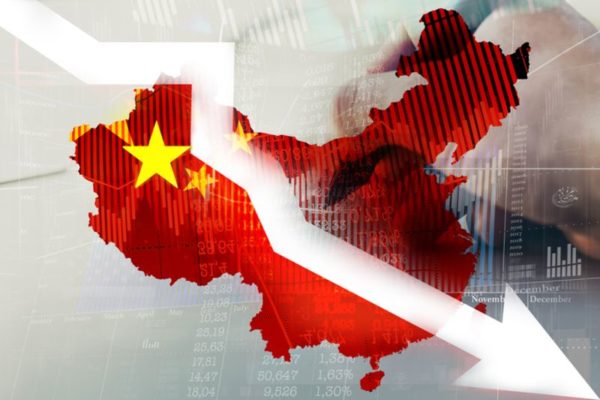
Chinese medicine
In such a scenario the “systemic financial risk” that Xi and his team are trying to prevent could actually be triggered by their own policies. For this reason, some economic commentators are rightly questioning how fervently the government will pursue its debt-cutting measures.
Charlene Chu of Autonomous Research in Hong Kong told Bloomberg News, “The government’s harsh rhetoric masks a softly-softly approach to tackling financial risk amid fears that stronger action would endanger the economy.” This she calls a ‘Chinese medicine’ approach.
She points out that while Beijing’s tougher rules succeeded in reducing the creation of new wealth management products (WMPs) – a major element of shadow banking activity – in the first-half of 2017, these subsequently rebounded. Overall, the number of outstanding WMPs at the end of 2017, valued at almost 30 trillion yuan (US$4.7 trillion), was the highest ever.
“There’s actually been zero deleveraging,” Chu says. “The market widely believes that the flow of credit in 2016 was off the charts, but the reality is that 2017 was very close in terms of additional credit flow. It’s the same old story that we have seen many, many times over the years – a pullback in certain sources of credit that are offset in other areas.” [Bloomberg News, 12 February 2018]
Recovery?
Superficially, the economy recovered last year, with growth accelerating for the first time in six years – 6.9% GDP growth in 2017, compared to 6.7% in 2016. But this was a temporary stabilisation based on a combination of increased stimulus (the record-breaking increase in bank lending during 2016) and a favourable international conjuncture, which included some unexpected gifts from Donald Trump’s presidency. These came especially on the currency front, with the US dollar falling in value by 10 percent since Trump took office.
The weaker dollar offered a crucial breathing space to the Chinese regime in its battle to stem capital flight, which had reached critical proportions in the period 2015-16. China’s huge horde of forex reserves shrank by more than a quarter during a frenetic 18 months. The softening dollar – an unstated policy of Trump’s administration, which denounces other governments as “currency manipulators” – has saved the People’s Bank of China (PBOC) tens of billions every month in currency interventions to support the yuan.
This acted to reinforce measures already taken by Beijing, reverting to its tightest capital controls since the 1990s, to stop capital bleeding out of the economy. These important external factors, including a modest pick-up in the world economy and commodity markets, helped Xi’s regime to steady China’s economic ship in 2017. But the global environment, and especially the direction of current US policy, is extremely unstable, as the recent volatility on global stock markets shows.
China’s so-called recovery rests on precarious foundations. The much-hyped consumer revolution has not arrived. Last year, China’s smartphone sales fell for the first time – by 4.9 percent – contributing to a global contraction, with China the number one market. Market analysts say China’s smartphone sector is “saturated”.
New vehicle sales increased by 3 percent in 2017, the slowest rise in six years, with eight of the 12 largest car companies reporting falling sales. China’s overpriced housing market, forcing new homebuyers to take on insane levels of debt, is a key factor holding back consumer spending.
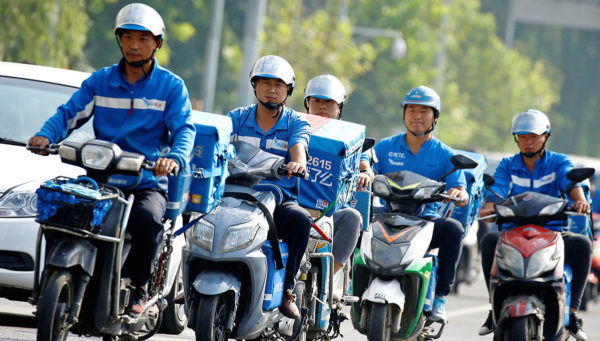
Is a trade war brewing?
Trade tensions between China and the US could escalate in 2018, driven by economic but also geopolitical factors. Washington has slapped tariffs on solar panels and washing machines from China and South Korea, while Chinese steel and aluminium exports, under investigation in the US for ‘dumping’ (selling below production cost), could be next.
Trump is under fire as the trade deficit with China hit a record US$375 billion in his first year as president (up from US$347 billion in 2016).
China responded by launching an anti-dumping and anti-subsidy investigation into sorghum imports from the US. It is the biggest customer for US sorghum and many other US farm products, making these a key target for retaliation. China has already begun buying more soybeans from Brazil at the expense of US producers.
However, this is a double-edged weapon as often is the case with trade protectionism – costlier soybeans and sorghum, which are mainly used as pig feed in China, will lead to higher pork prices and therefore would not be popular.
Protectionism
Meanwhile, China’s hi-tech industries – accused by Trump of stealing intellectual property rights – may also be a target of US trade sanctions. That would be a much bigger issue and could prompt a more substantial Chinese reaction.
Fear of a wider trade war hangs like a shadow over the export-dependent East Asian region and may accelerate steps towards a more extensive regional trade bloc. This however will face significant obstacles, not least from competing initiatives led by China, Japan and others. The Chinese regime will choreograph its response to Trump’s trade measures in a way that raises its own influence over other Asian governments.
While capitalist governments routinely decry “anti-globalisation” they are all in practise adopting protectionist policies. According to the World Trade Organisation, between 2008 and 2016 the G20 economies introduced 1,583 new trade restricting measures and removed just 387.
The election of the right-wing nationalist Trump, an expression of the capitalist malaise, with numerous mini-Trumps vying for power in other parts of the world, has raised fears of a 1930s-style trade war. Last year, China seemed to dodge this bullet, with Trump opting for improved ties with Xi Jinping.
This year has opened on a different note, with Trump’s State of the Union speech on 30 January branding China and Russia as economic and military rivals – motivating even bigger US defence spending according to the president. China’s foreign ministry described Trump’s speech as a “cold war” approach. This increase in tensions is however the logic of a capitalist world in crisis.
More low-paid jobs
For the working class, seemingly strong economic growth last year has not translated into improved conditions or prospects. Instead, as Hong Kong-based China Labour Bulletin noted, this has “merely created more low-paid and insecure jobs, especially in the service sector, while factory workers continued to be laid off, often without any compensation.”
Workers are facing a systemic shift in the labour market towards precarious informal jobs. There is a tsunami of job contracts being changed by the bosses. Workers including in the state-owned sector are being rehired as agency workers on inferior conditions and without benefits.
Millions in the “booming” services sector are employed as “individual contractors”, enabling companies to escape paying pensions and other benefits. When the Labour Contract Law was introduced ten years ago, one of its professed goals was to increase job security. As we warned at that time, this hasn’t happened and the reason is obvious: the prohibition of genuine workers’ unions.
According to a National Bureau of Statistics survey, the number of migrant workers with an employment contract has fallen from 42.8 percent in 2009 to 35.1 percent in 2016. These harsh realities are forcing more and more workers to defy the dictatorship’s strict laws against protest. Not for nothing does the regime sense it’s in a race against time.
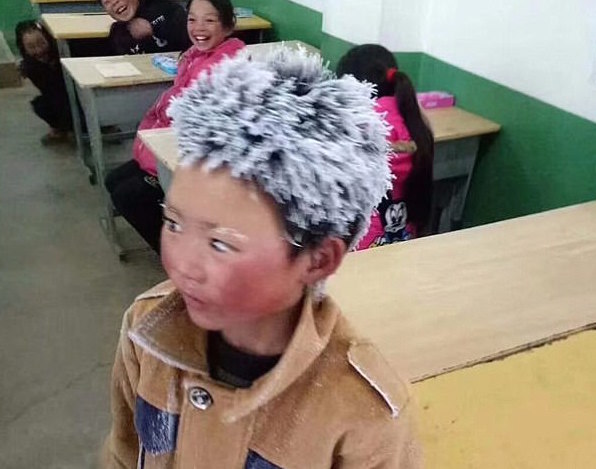
“Frost Boy” and China’s extreme wealth gap
In the first 96 hours of 2018, Yang Huiyan, China’s richest woman and fourth richest person increased her wealth by US$2.1 billion due to the surging stock market. This was reported by Bloomberg News. 35-year-old Yang’s Country Garden Holdings is China’s biggest property developer by sales. At around the same time, photos of an eight-year-old boy in Yunnan province lit up the internet and gave a timely reminder of the brutal class divisions in Xi Jinping’s China.
‘Frost Boy’ Wang Fuman became a national talking point despite the government’s strict media controls, having walked 4.5 kilometres through mountainous terrain and sub-zero cold to arrive at school with his hair covered in ice. Wang is one of China’s 60 million “left-behind children” – raised by relatives or neighbours because their parents have moved to richer parts of China in search of work, but are unable to take their children because of the archaic hukou system.
Migrant workers like Wang’s father currently earn around 35,000 yuan in a whole year. Yang Huiyan made more than that every single second of her turbo-charged stock market rally. It’s called “socialism with Chinese characteristics” and in Xi Jinping’s parlance, “the China Dream”.

